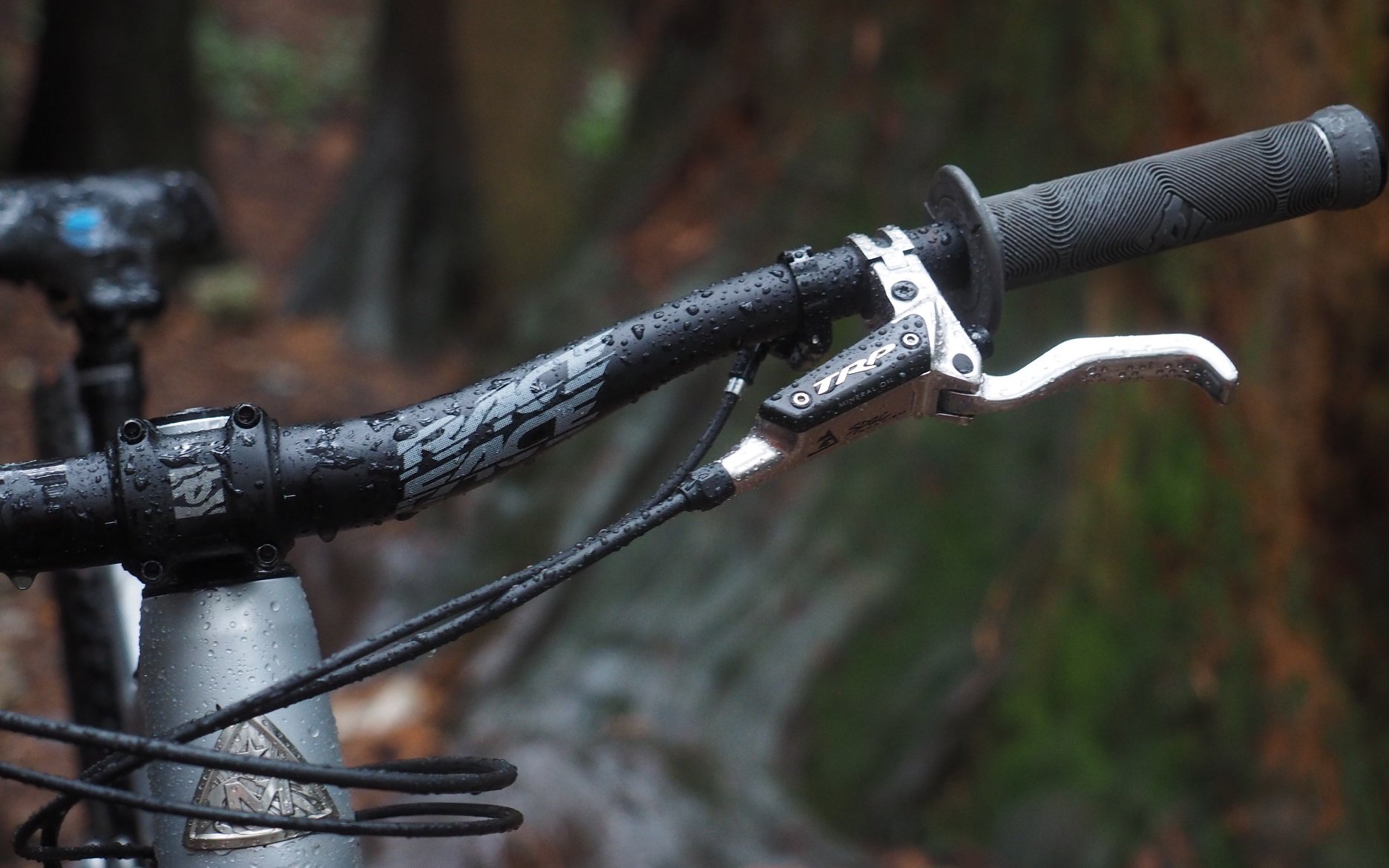
REVIEW
Race Face's $100 Chester 35 Cockpit
Chester Choices
Next, SixC, Turbine or Atlas, I don't think that the top end carbon and aluminum product lines from Race Face need much introduction. Meet Chester. Way down the product list is a group designed to take a beating on a budget. Yeah but whose budget?
Choose a stem length and handlebar rise for the great looking, subtly branded, silver-on-black cockpit and any one of seven available colors for the grips and ride off into the sunset for a street price of 100 USD.
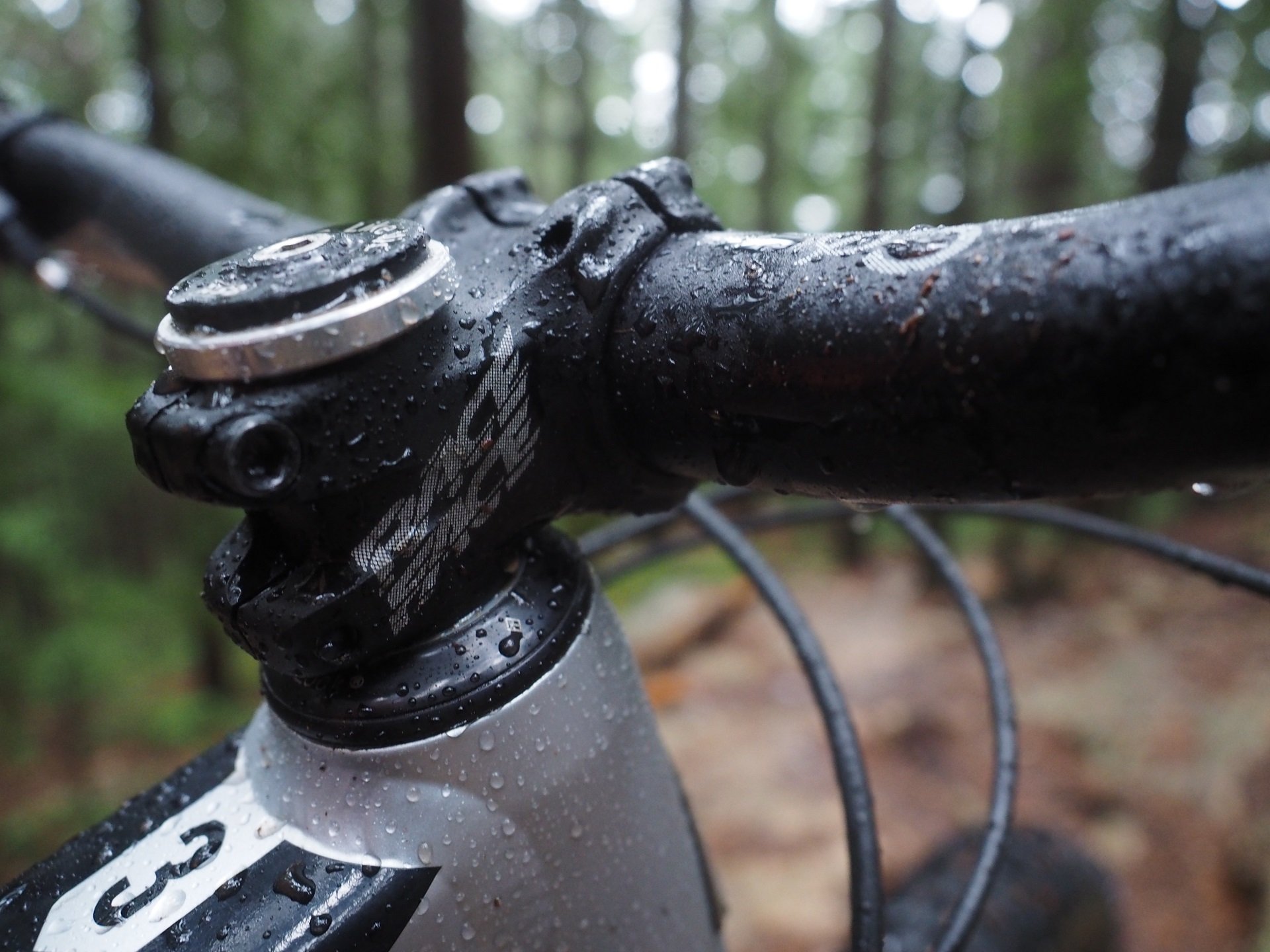
The Chester stem has a 35mm clamp and comes in a 40mm or 60mm length.
Stem
The 35mm bar standard, for better or worse, is permeating lower and lower price points of performance mountain bikes and the Chester stem is a great swap-out choice in 40mm or 60mm when it comes to dialling in fit. It's unsurprisingly stiff and the 170-gram weight for a 60mm stem is actually a reasonable weight for a DH-rated stem at any price point.
The 6061 aluminum stem does niggle me slightly with its use of two different hardware sizes; M5 bolts for the face plate and M6 bolts for the steerer clamp. My personal preference is M6 bolts all the way around but I can deal with the mix at this price.
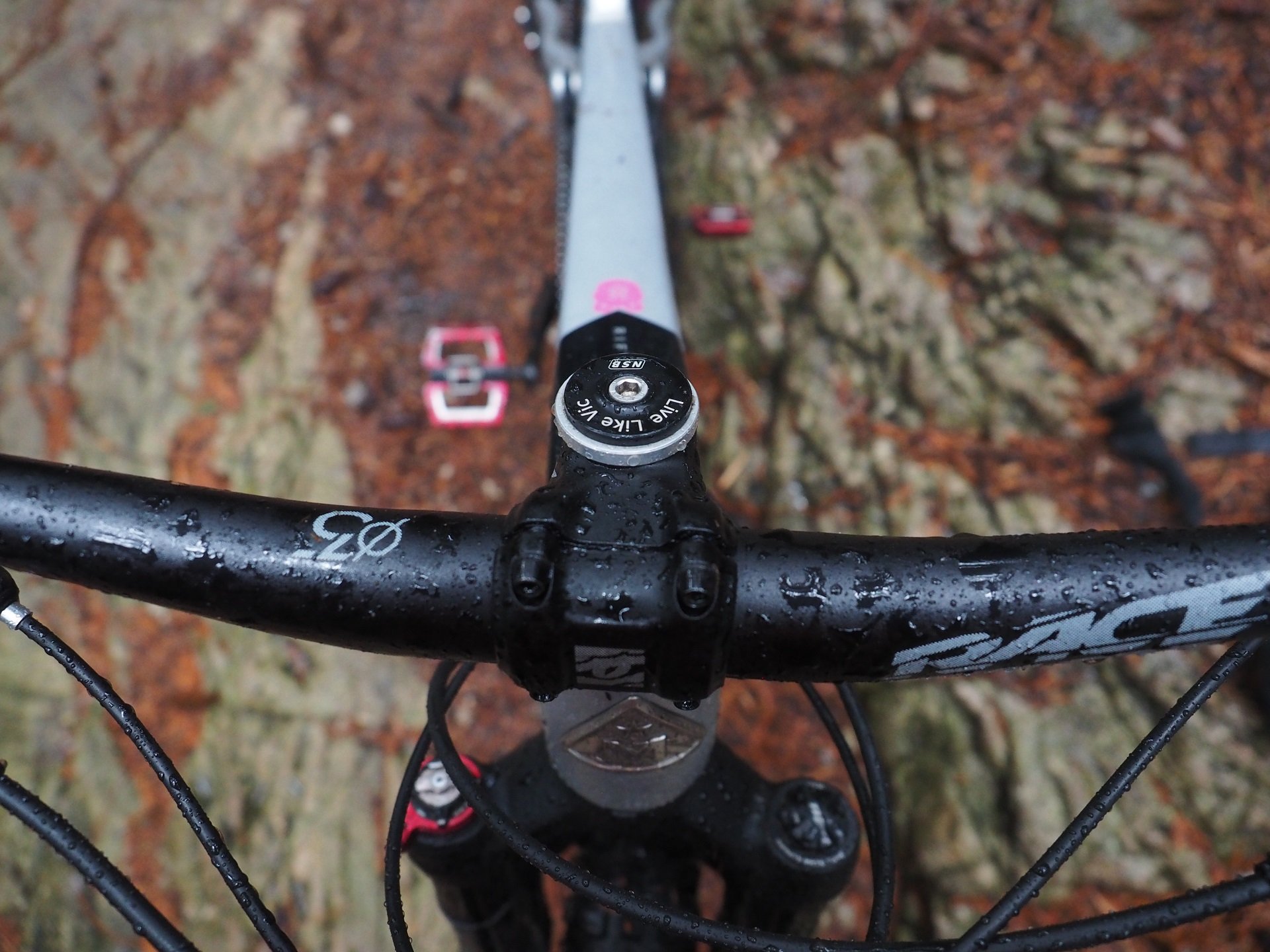
The face plate is held on by four screws with 4mm heads. There was no grease or Loctite on the bolts out of the box but that's an easy fix.
Alternatively, leaving the bolts as M5 and M6 but giving them both T-25 heads, instead of the varied 4mm and 5mm hex heads, would be a win for me. I can taste the pure glory of having every bolt on my bike use the same tool from water bottles, to brake mounts, to rotors bolts and etc.
When it comes to maximizing performance for price, this is a great choice. It's stiff, it's not a pig, it holds a bar tight, it looks good in black and it will run just less than 50 USD. Sure, it doesn't look as sexy as a CNC machined unit but for those that see beauty in practical performance or would rather spend the cash elsewhere it's choice.
Bar
The 8° backsweep and 5° upsweep of the Chester bar is fairly standard. The portliest option, a 35mm rise, weighs in at just over 400 grams and the bar is shot peened to make it more durable. The handlebar is available in three different rises and all come in a 780mm width.
The Chester doesn't match the je-ne-sais-quoi ride quality of my favorite standard sweep aluminum bar, the Renthal Fat Bar. It's not that the Fat Bar is flexy, it's not that the Chester is overly stiff but on the same bike with the same tire, same grips, and same with both bars at 780mm the Renthal is more forgiving while giving up nothing in the handling department.
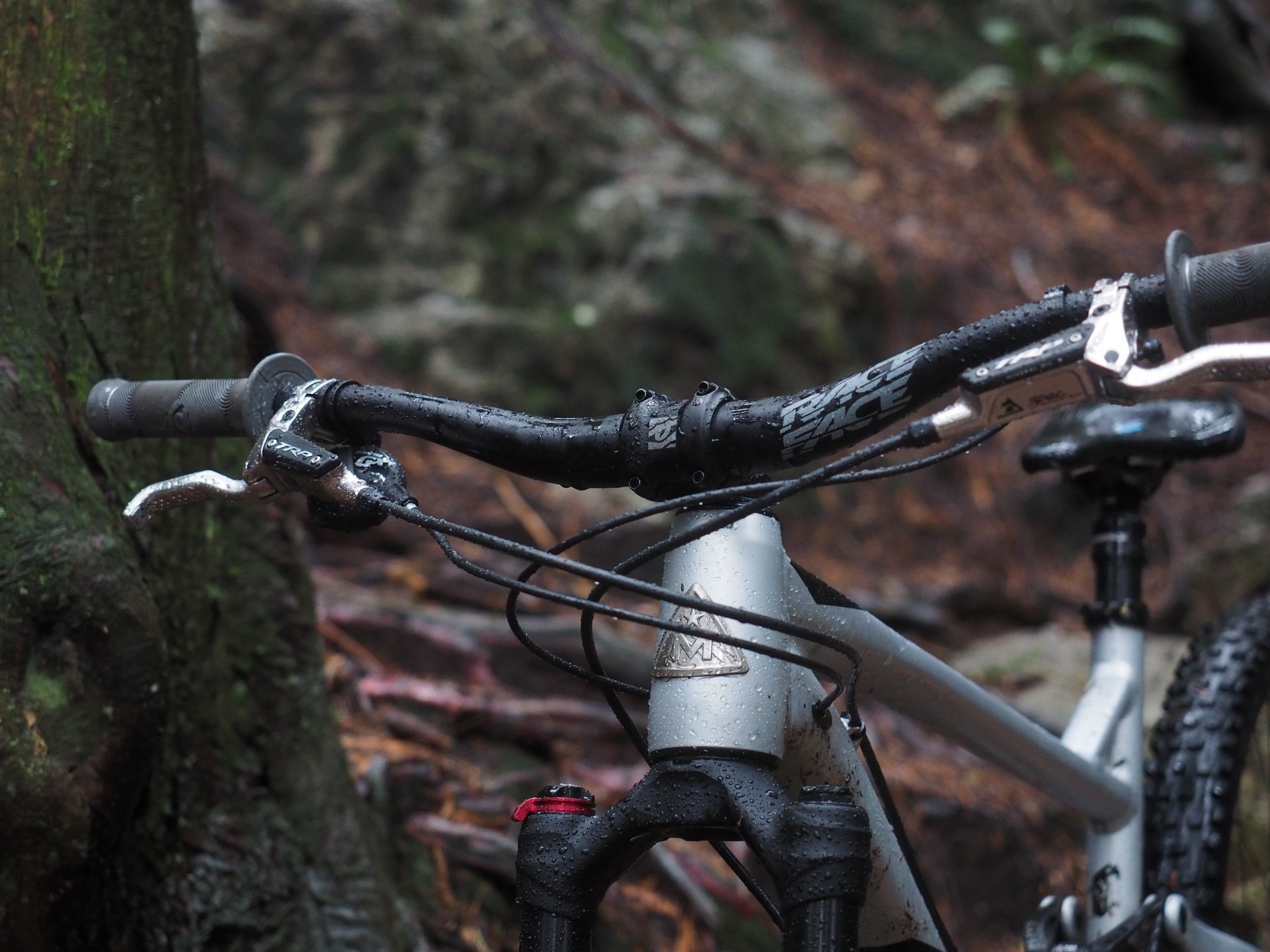
The Race Face Chester 35 bar comes in 10mm, 20mm or 35mm rise and a 780mm width.
Saying that does feel a bit like comparing two batches of my favorite beer though because the Chester rides great for much less money. It is not insanely stiff like some 35mm bars I've ridden. With the fatter Chester grips I've been running, versus my Renthal Push-Ons, any ride difference is erased and it becomes one of those components I never think about.
Since I'm here. I wish Race Face would offer some of their bars in a 12° sweep. There's nothing wrong with 7°x5°, 8°x4°, 8°x5° and etc for most riders but I think, especially with wider bars, a lot of folks could benefit from more sweep. Damn, I should have added that to my Dear Santa list.
Drifting aside, it's a great choice in a black wide-enough handlebar for 50 USD.
Grips
The Chester grips hug my fingers like shag carpeting. They're thicker than what I normally run but with or without gloves they feel really nice. They have huge BMX style flanges divided into 1/3 sections for easy cutting for shifter or dropper post lever compatibility if needed.
The 12 USD grips comes in four colors and three shades for a total of seven options.
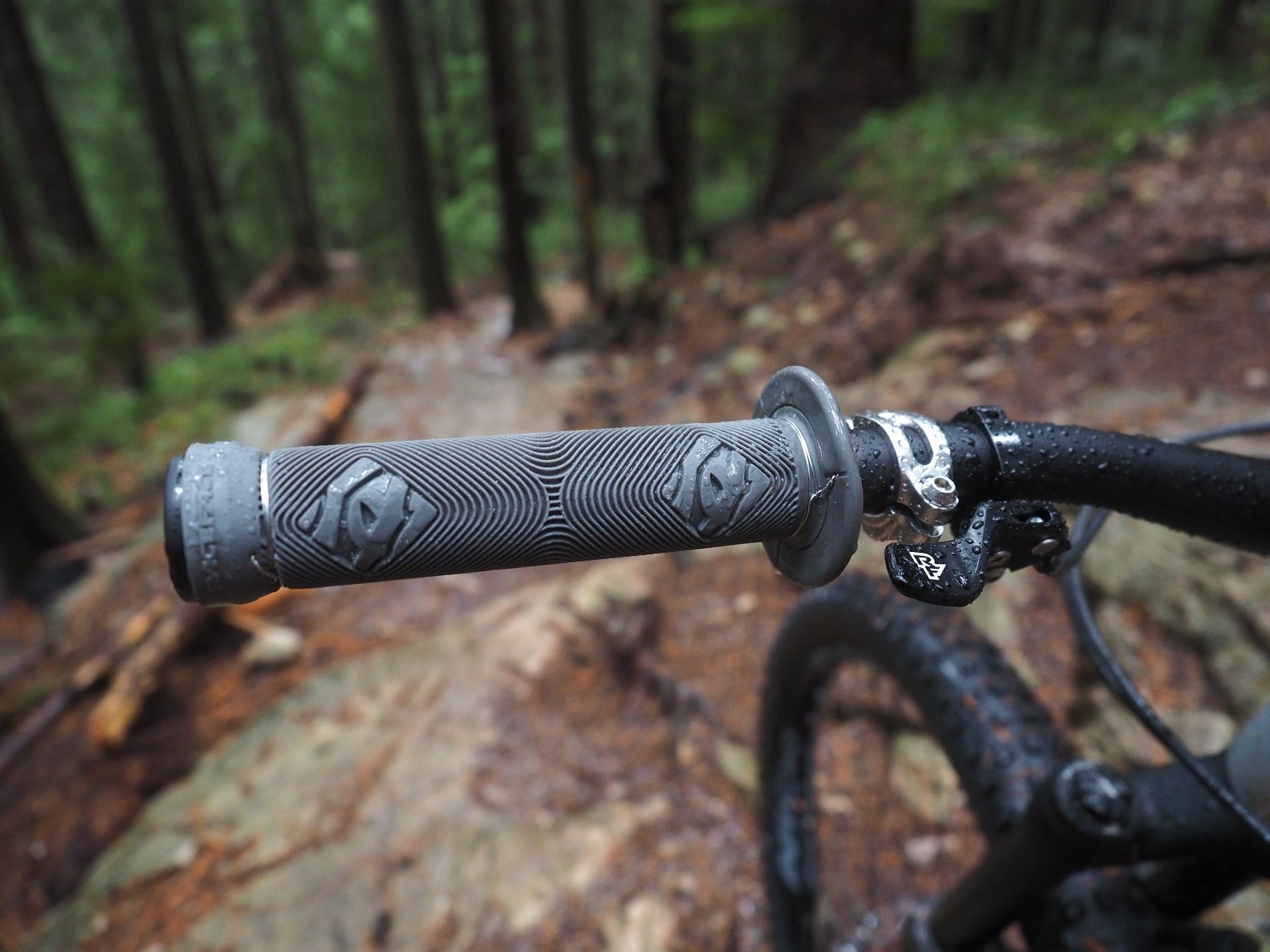
Chester feels wider, but not too too wide, compared to what I usually run. They're a 31mm diameter vs 28mm for my Renthal Push-Ons.
I glued & wired on my Chester grips but I know one lazy ass who is having lots of no-spin fun with a basic hairspray treatment. Apparently the secret weapon is Vidal Sassoon Pro Series Extra Firm Hold Hairspray (and I thought the bike industry overthinks nomenclature).
The Chester grips are good but not my first or second love. Different strokes for different folks applies though as two friends and a random stranger who've laid hands on them have made covetous 'best grip ever' remarks. For 12 bucks it's an easy thing to try for anyone whose not in love with their current rubber.
Chester
I see a lot of folks on the mountain running ancient bars and stems. Scary ancient. Rusted bolts. Scratched to shit. Just in this last month, when I've really been thinking about it, I've noted a few old 25.4mm clamp setups and one of them was a carbon bar that looked to be delaminating. I felt a duty to point out the last one and was told that 'it hasn't failed yet'.
There are also a lot of basic-but-real mountain bikes being sold that would benefit from a wider bar and shorter stem setup. Or, for riders building a new bike who know the high end carbon bar they want to use but aren't sure on the stem length, Chester is a quality, DH-rated, choice that isn't too portly as a placeholder to dial everything in before spending the boutique bucks.
Chester is also well represented, especially the bars, on bikes at a variety of prices as original equipment (OE) spec so once I started noticing the group I notice it a lot.
If you're Chester curious, or looking for a great bang-for-buck cockpit upgrade, please check it out here.







Comments
Andy Eunson
6 years, 4 months ago
Having snapped off a steer tube once and knowing a number of guys who have also broken steer tubes, some of whom ended up with a broken arm and another 150 or so stitches to his face, I retire certain critical components every so often just because for peace of mind. I had an interesting stem problem this year. I installed a new fork, DVO Diamond and after I could not keep the headset tight. Over about 7 or 8 rides I was adjusting every ride. Crown race was on all the way, parts were checked and rechecked and all seemed normal with the headset. I changed the stem to one that had no weight saving cutouts and boom, problem solved. Some stems are quite skeletal and tend to be the pricy ones. Perhaps we are better off with a bit more weight but better more reliable product.
Reply
Garrett Thibault
6 years, 4 months ago
Great write-up Andrew!
Definitely worth thinking about replacing old cockpit parts. I cracked the faceplate on an old Thompson stem on Boogie Nights a couple of months ago.
Reply
Andrew Major
6 years, 4 months ago
Urgh... did your bar slip or did you notice it?
I used to notice at least one cracked stem a week working at the shop... way too often on bikes that weren’t in for service but just rolling through on their way to/from the trail.
Reply
Garrett Thibault
6 years, 4 months ago
The bar slipped a bit, and there was a loud crack when it happened.
I don’t remember how I even ended up with the stem I broke. It wasn’t new when I got it many years ago. That wasn’t a component I had thought about cracking, but now I will.
Reply
Andrew Major
6 years, 4 months ago
That’s f***ing scary. The closest I’ve come in recent memory is an under tightened bar on a buddies bike that he asked me to test the fork on. The sound my wrists made actually had me puke in my mouth a bit but I ended up being fine.
But yeah, stems - bars - steerers - and brake adapter bolts are all zones on concern for me. Any of those things failing could not be funny.
Reply
JVP
6 years, 4 months ago
Torque wrench for the win! I cracked an older RaceFace OEM-level (Aeffect?) faceplate on my trail bike. Happened to notice it half way up a climb, could have been that way for weeks. Since then I've been using a torque wrench on all cockpit parts, even with aluminum bars. Turns out I had the faceplate bolts way overtightened. I'm not even a ham-fisted mechanic (usually).
Reply
Andrew Major
6 years, 4 months ago
There are two types of people in the world... those that overtighten their stems and those that undertighten them?
Solid advice, especially for parts than can kill you if they fail or slip.
Reply
[user profile deleted]
6 years, 4 months ago
This comment has been removed.
Andrew Major
6 years, 4 months ago
So it's not that I don't believe that carbon products - particularly products like rims and handlebars that are not bonded to unlike materials - can't be made both stronger and notably lighter than the equivalent aluminum products. Money aside, I have no concerns running carbon bars as long as maximum stiffness isn't a design goal.
I can't remember the last time I've seen a broken aluminum MTB handlebar but I have also seen a few broken carbon bars a year for the last few years. I wonder if it doesn't come down to two things:
1) Carbon bars seem to exist in two states: perfect and broken. They don't bend, they don't dent and they actually hide scratches pretty well. An aluminum bar that's put through identical abuse will scream "REPLACE ME!!!" where as a carbon bar will likely still look saleable (NEVER buy a used carbon bar! Actually, used stems and handlebars are probably best avoided).
2) The initial investment and replacement costs of most carbon bars is so high that riders are reluctant to replace them if they "look fine" even if (as Andy notes) retiring critical components before they actually reach their end of life is probably best practice. It maybe sounds harsh but if someone doesn't have the money to replace their carbon bar after a huge digger (regardless of how it looks) it's probably better to buy three aluminum ones.
A good (bad) example is a customer I had that cracked the arch on a set of Fox 40 lowers (incredibly rare), bent the crowns and cracked his direct mount stem in a massive crash. He replaced all of those parts but not his Easton carbon bar because it "is totally fine and I've never heard of one breaking".
They are also much for susceptible to cracking from over-torquing of the stem clamp or controls. A torque wrench is the cure in either case (or leave controls loose enough to spin in a crash and solve two problems in one) and 35mm takes it a step farther by making the bars less susceptible to user inflicted damage.
Reply
Rob Gretchen
6 years, 4 months ago
I am on the fence on carbon bars/cranks... as a burlier rider and one who has broken 2 sets of carbon cranks (manufacture omitted) this past season I am sticking to good old alloy for those duties moving forward... I am OK with carbon rims however... even though I have seen many of those fail as well... I just think of the potential for catastrophe when a bar fails and a crank failure can suck dog balls pretty hard as well.... just my 2 cents...
Reply
[user profile deleted]
6 years, 4 months ago
This comment has been removed.
Timenator
6 years, 1 month ago
This cockpit came on my Evil Calling build from the factory and although I didn't realise that is a $100 set up, its been excellent. Like it says in the article, I don't even think about it. I don't think I'll bother changing it out for something more bling and expensive, it works great.
Reply
Please log in to leave a comment.